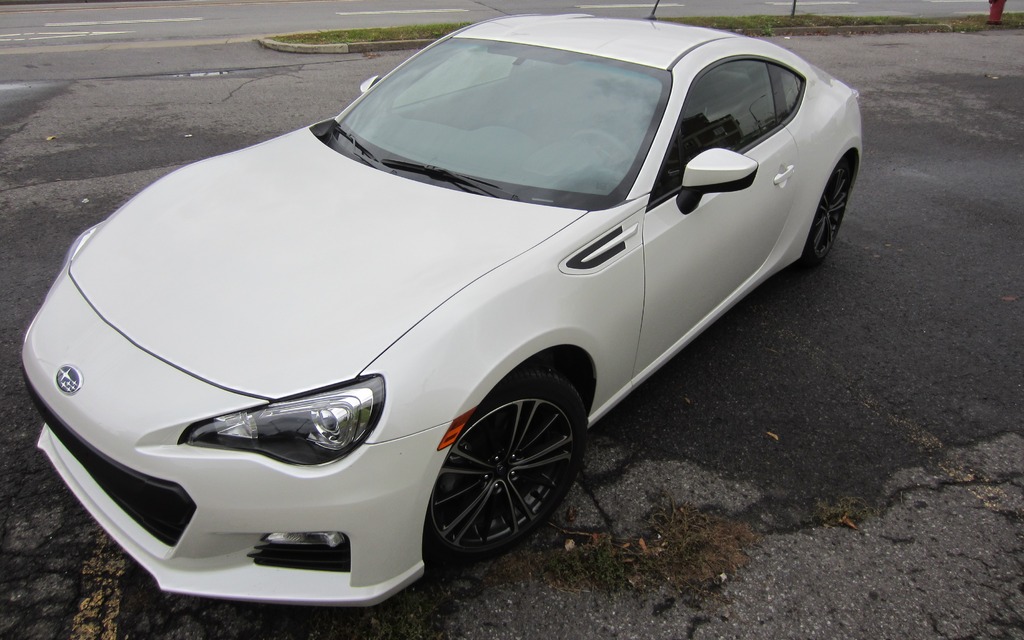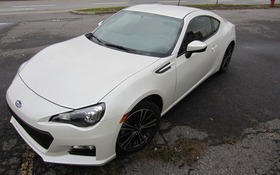2013 Subaru BRZ - The Most Exciting Subaru Ever Built

| Strong points |
|
|---|---|
| Weak points |
|
The concept of a rear-wheel drive Subaru is as foreign to most Canadians as the idea of Toyota pitching in to help build an exciting car. And yet here we are with the 2013 Subaru BRZ, by far the most exciting automobile in the Japanese brand's lineup and the direct result of collaboration between two companies that were able to leverage their individual strengths to produce a sports car that can go toe-to-toe (from a dynamics perspective) with any vehicle in its class.
Of course, defining what automobiles the Subaru BRZ (and its sibling, the Scion FR-S) has been designed to take on is not an easy task. Is it a Miata with a roof? A lighter alternative to the Genesis Coupe? A poor man's Porsche Cayman? One thing is certain: the BRZ is more fun to drive than any other automobile to have been built by either Toyota or Subaru in the past 10 years.
- Also: Subaru Releases BRZ tS in Japan
- Also: 2014 Scion FR-S: Slip-Sliding Through Winter's Wonderland
Back to Basics
A big part of why the 2013 Subaru BRZ is so dynamically interesting has to do with the engineering philosophy behind its platform. Intended as a spiritual descendent of the affordable, rear-wheel drive Toyota coupes and hatchbacks built in the 80s and 90s, the BRZ features a 50/50 balance for its 1250 kg curb weight, which instantly makes it the most appealing, inexpensive coupe around for anyone serious about track driving. Weight is the enemy whether cornering, braking, or accelerating, and the elegantly supple suspension tuning afforded the Subaru makes its low mass platform an absolute thrill ride to snake through S-curves, long carousels, and tricky chicanes. The BRZ's tires, on the other hand - low-rolling resistance units snatched from the Prius parts bin - should be changed out at your local shop on the way home from the dealership. A car this good deserves equally capable rubber, and the stock units just can't cut it.
Underneath the hood it's the same story: in place of a fire-breathing, turbocharged monster like most would have expected from a high performance Subaru, the BRZ features a rev-happy, 2.0-litre four-cylinder that marries horizontally-opposed engine design with Toyota's direct fuel injection technology. The end result is 200 horsepower and 151 lb-ft of torque, numbers that seem unusually low for a car whose fun quotient has been praised so extensively, until one slips behind the wheel and fires the boxer up.
Pulling away from a stop is nothing spectacular but once underway the BRZ's motor is perfectly happy to bear down and grind out excellent acceleration at almost any speed. Combined with its willingness to rev up past 7,000 rpm, and the way the coupe's exhaust note and engine sounds tear through the cabin while the car is being driven hard, the BRZ offers a completely satisfactory package for all of the important gearhead senses.
Even on the street, the Subaru BRZ's electrically-assisted power steering and excellent six-speed manual gearbox work together to keep the pilot involved with every aspect of the driving experience. The suspension system that was such a pleasure on the track fortunately doesn't become a liability when pressed into civilian duty, which meant that even on Montreal's apocalypse-grade asphalt we never found ourselves cursing the vehicle's ride quality. Fuel economy also checks in at a surprisingly frugal 5.9 l/100 km on the highway (if the optional six-speed automatic gearbox is selected).
Three Friends + BRZ = Bring A Bus Pass
The interior of the 2013 Subaru BRZ is well turned out for its price point. Our test vehicle offered a pleasing collection of soft plastics, cloth seats, and a leather-wrapped steering wheel and shift knob that lent an air of solidity to the daily drive. We were, however, disappointed with the vehicle's Pioneer stereo and navigation system, which was abysmal to use and which should be avoided at all costs. We were also surprised at the fact that it was near impossible to apply the parking brake without also ripping the leather trim from the center console.
Those two complaints aside, the rest of the BRZ's interior trappings were beyond reproach. A huge tachometer dominates the center of the gauge display directly in front of the driver, flanked by a smaller analog speedometer and a digital readout of the vehicle's rate of forward progress. The center stack's HVAC controls were easy-to-grip knobs, which we found befitting of a simple, straightforward sports car, and the smooth dash treatment was an equally befitting exercise in the 'less is more' philosophy that seemed to govern the Subaru's approach
Outstanding front seats keep bodies locked in place even as the coupe pulls more than its fair share of lateral Gs, and we are happy to note that the installation of racing harnesses is facilitated by a gap between the headrest and the seatback. The rear accommodations…forget about it. Unless you have an unusually flexible friend who doesn't mind contorting themselves into a pretzel in order to access the back seats, then consider the BRZ a two-seater, not a 2+2. Which is honestly how a compact sports car should be.
A Game Changer For Subaru
Subaru has always had a reputation as a company that builds reliable, all-weather cars that weren't particularly pretty but which excelled in their respective niches. The 2013 Subaru BRZ adds several new descriptors to the brand's online dating profile, including "sexy," "dynamic," and "loves to try new things." The BRZ is the most interesting new face to have emerged from either Toyota or Subaru in recent memory, and it seems on-track to develop a cult following of its own that is every bit as strong as the ones that have made WRX, the Outback, and the Forester customers some of the most loyal in the business. It's hard to think of a more rewarding car to drive - from a performance perspective - for less than $30,000.











